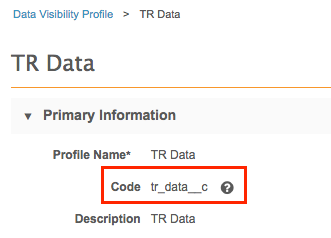View exported configuration records
DM
The configuration records that you choose to download contain information that you can compare the two environments using a third party tool. Each text file is organized by feature configuration.
Feature configurations are the properties defined and used by a feature.
Configuration records are the individual records in each feature that are saved to the database.
Example
In the SystemInterfaces.json file, the System Definitions feature configuration contains the data for the source systems defined in the Network instance. The source system called TR is an individual configuration record.

Codes and feature versions have been added to the text files to help with comparisons.
Code
A code is assigned to each configuration record so that it is uniquely identified. This code is generated automatically based on the name or other identifying attributes, depending on the feature configuration.

For most configuration records, the attributes used for code generation cannot be changed so the same code is created each time Network processes the exported file. For example, for the Veeva field Email 1, the code email_1__v is generated each time you export the configuration. However, if the attributes can change; for example, subscription names because they are defined by users, Network creates the code and persists it in the database. The code does not change even if the name changes. If the name of a configuration record conflicts with an existing code, an incremental counter is added to a code.
Example
- A source description named Data Load A is created. The generated code is data_load_a__c.
- The source subscription is renamed to Data Load B. The generated code remains data_load_a__c.
- A second source subscription is created and is named Data Load A. The generated code is data_load_a_1__c.
The generated code is displayed in the UI for configuration records where the code is persisted in the database. These records include source and target subscription names, inbox task groups, and data visibility profiles.

Feature version
Each feature is assigned a version number so that future changes can be tracked for compatibility. All of the features start at version 1.0 and will be incremented each time a new enhancement of the feature is released.
